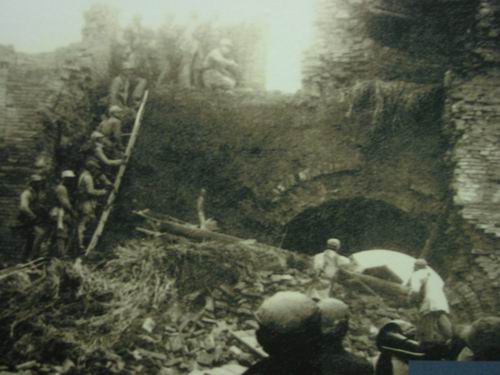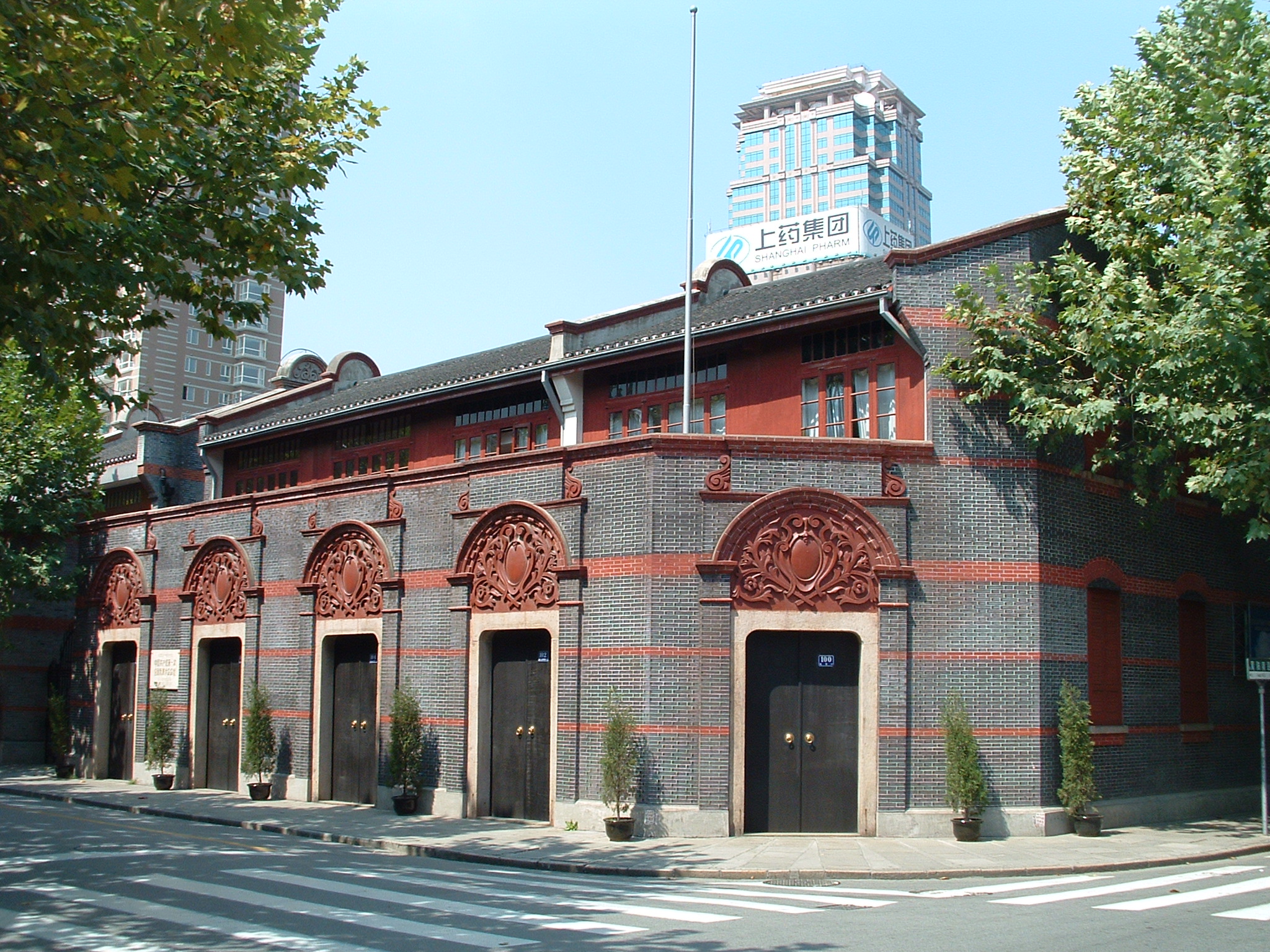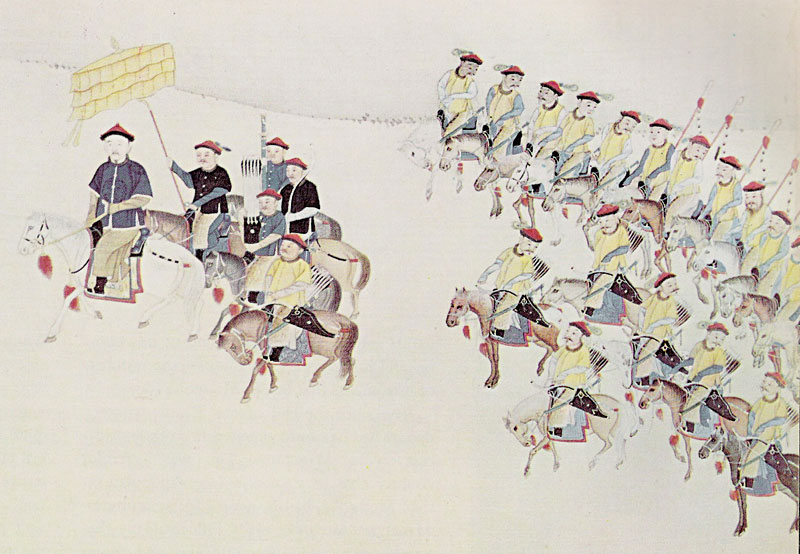|
Seven Military Classics
The Seven Military Classics () were seven important military texts of ancient China, which also included Sun-tzu's ''The Art of War''. The texts were canonized under this name during the 11th century AD, and from the time of the Song dynasty, were included in most military '' leishu''. Emperor Shenzong, the sixth emperor of the Song dynasty, determined which texts would be included in this anthology in 1080. For imperial officers, either some or all of the works were required reading to merit promotion, like the requirement for all bureaucrats to learn and know the work of Confucius. ''The Art of War'' was translated into Tangut with commentary. List According to Ralph D. Sawyer and Mei-chün Sawyer, who created one of the latest translations, the Seven Military Classics include the following texts: * Jiang Ziya (Taigong)'s '' Six Secret Teachings'' * '' The Methods of the Sima'' (also known as ''Sima Rangju Art of War'') * Sun Tzu's ''The Art of War'' * Wu Qi's ''Wuzi'' ... [...More Info...] [...Related Items...] OR: [Wikipedia] [Google] [Baidu] |
China
China, officially the People's Republic of China (PRC), is a country in East Asia. With population of China, a population exceeding 1.4 billion, it is the list of countries by population (United Nations), second-most populous country after India, representing 17.4% of the world population. China spans the equivalent of five time zones and Borders of China, borders fourteen countries by land across an area of nearly , making it the list of countries and dependencies by area, third-largest country by land area. The country is divided into 33 Province-level divisions of China, province-level divisions: 22 provinces of China, provinces, 5 autonomous regions of China, autonomous regions, 4 direct-administered municipalities of China, municipalities, and 2 semi-autonomous special administrative regions. Beijing is the country's capital, while Shanghai is List of cities in China by population, its most populous city by urban area and largest financial center. Considered one of six ... [...More Info...] [...Related Items...] OR: [Wikipedia] [Google] [Baidu] |
Three Strategies Of Huang Shigong
The ''Three Strategies of Huang Shigong'' is a treatise on military strategy that was historically associated with the Taoist hermit Huang Shigong and Han dynasty general Zhang Liang. Huang Shigong gave this treatise to Zhang Liang, that allowed Zhang to transform into an adept statesman and powerful war theorist. The treatise's literal name is ''"the Three Strategies of the Duke of Yellow Rock"'', based on the traditional account of the book's transmission to Zhang. Modern scholars note the similarity between its philosophy and the philosophy of Huang-Lao Daoism. It is one of China's Seven Military Classics. Content As its title would suggest, ''the Three Strategies of Huang Shigong'' is organized into three sections, which can be interpreted as a hierarchy of importance or as simple indicators of position in the work. The work itself states that all three types of strategy are necessary for different styles of government. Much of the work is concerned with administrativ ... [...More Info...] [...Related Items...] OR: [Wikipedia] [Google] [Baidu] |
Seven Military Classics
The Seven Military Classics () were seven important military texts of ancient China, which also included Sun-tzu's ''The Art of War''. The texts were canonized under this name during the 11th century AD, and from the time of the Song dynasty, were included in most military '' leishu''. Emperor Shenzong, the sixth emperor of the Song dynasty, determined which texts would be included in this anthology in 1080. For imperial officers, either some or all of the works were required reading to merit promotion, like the requirement for all bureaucrats to learn and know the work of Confucius. ''The Art of War'' was translated into Tangut with commentary. List According to Ralph D. Sawyer and Mei-chün Sawyer, who created one of the latest translations, the Seven Military Classics include the following texts: * Jiang Ziya (Taigong)'s '' Six Secret Teachings'' * '' The Methods of the Sima'' (also known as ''Sima Rangju Art of War'') * Sun Tzu's ''The Art of War'' * Wu Qi's ''Wuzi'' ... [...More Info...] [...Related Items...] OR: [Wikipedia] [Google] [Baidu] |
Romance Of The Three Kingdoms
''Romance of the Three Kingdoms'' () is a 14th-century historical novel attributed to Luo Guanzhong. It is set in the turbulent years towards the end of the Han dynasty and the Three Kingdoms period in Chinese history, starting in 184 AD and ending with the reunification of the land in 280 by the Western Jin. The novel is based primarily on the ''Records of the Three Kingdoms'', written by Chen Shou in the 3rd century. The story – part historical and part fictional – romanticises and dramatises the lives of feudal lords and their retainers, who tried to supplant the dwindling Han dynasty or restore it. While the novel follows hundreds of characters, the focus is mainly on the three power blocs that emerged from the remnants of the Han dynasty, and would eventually form the three states of Cao Wei, Shu Han, and Eastern Wu. The novel deals with the plots, personal and military battles, intrigues, and struggles of these states to achieve dominance for almost 100 years. ''Ro ... [...More Info...] [...Related Items...] OR: [Wikipedia] [Google] [Baidu] |
Boshin War
The , sometimes known as the Japanese Revolution or Japanese Civil War, was a civil war in Japan fought from 1868 to 1869 between forces of the ruling Tokugawa shogunate and a coalition seeking to seize political power in the name of the Imperial Court in Kyoto, Imperial Court. The war stemmed from dissatisfaction among many Kazoku, nobles and young samurai with the shogunate's handling of foreigners following the opening of Japan during the prior decade. Increasing Unequal treaties, Western influence in the economy led to a decline similar to that of other Asian countries at the time. An alliance of western samurai, particularly the domains of Chōshū Domain, Chōshū, Satsuma Domain, Satsuma, and Tosa Domain, Tosa, and court officials secured control of the Imperial Court and influenced the young Emperor Meiji. Tokugawa Yoshinobu, the sitting ''shōgun'', realizing the futility of his situation, abdicated and handed over political power to the emperor. Yoshinobu had hoped t ... [...More Info...] [...Related Items...] OR: [Wikipedia] [Google] [Baidu] |
Sengoku Period
The was the period in History of Japan, Japanese history in which civil wars and social upheavals took place almost continuously in the 15th and 16th centuries. The Kyōtoku incident (1454), Ōnin War (1467), or (1493) are generally chosen as the period's start date, but there are many competing historiographies for its end date, ranging from 1568, the date of Oda Nobunaga#Ise campaign, Omi campaign, and march to Kyoto, Oda Nobunaga's march on Kyoto, to the suppression of the Shimabara Rebellion in 1638, deep into what was traditionally considered the Edo period. Regardless of the dates chosen, the Sengoku period overlaps substantially with the Muromachi period (1336–1573). This period was characterized by the overthrow of a superior power by a subordinate one. The Ashikaga shogunate, the ''de facto'' central government, declined and the , a local power, seized wider political influence. The people rebelled against the feudal lords in revolts known as . The period saw a break ... [...More Info...] [...Related Items...] OR: [Wikipedia] [Google] [Baidu] |
Genpei War
The was a national civil war between the Taira clan, Taira and Minamoto clan, Minamoto clans during the late Heian period of Japan. It resulted in the downfall of the Taira and the establishment of the Kamakura shogunate under Minamoto no Yoritomo, who appointed himself as ''Shōgun'' in 1192, governing Japan as a military dictator from the eastern city of Kamakura. It followed a ''coup d'état'' by the Taira in 1179 with the removal of rivals from all government posts, and subsequently banishing them, and a call to arms against the Taira, led by the Minamoto in 1180. The ensuing Battle of Uji (1180), Battle of Uji took place just outside Kyoto, starting a five-year-long war, concluding with a decisive Minamoto victory in the naval Battle of Dan-no-ura. However, it has been pointed out that the Battle of Ōshū in 1189 was the last battle during this period of civil war, as it completed Yoritomo's nationwide domination through the annexation of Tōhoku region, Northeast Japan. ... [...More Info...] [...Related Items...] OR: [Wikipedia] [Google] [Baidu] |
Chinese Civil War
The Chinese Civil War was fought between the Kuomintang-led Nationalist government, government of the Republic of China (1912–1949), Republic of China and the forces of the Chinese Communist Party (CCP). Armed conflict continued intermittently from 1 August 1927 until Communist victory resulted in their total control over mainland China on 7 December 1949. The war is generally divided into two phases with an interlude: from August 1927 to 1937, the First United Front alliance of the KMT and CCP collapsed during the Northern Expedition, and the Nationalists controlled most of China. From 1937 to 1945, hostilities were mostly put on hold as the Second United Front fought the Second Sino-Japanese War, Japanese invasion of China with eventual help from the Allies of World War II. However, armed clashes between the groups remained common. Exacerbating the divisions within China further was the formation of the Wang Jingwei regime, a Japan-sponsored puppet government led by Wang ... [...More Info...] [...Related Items...] OR: [Wikipedia] [Google] [Baidu] |
Chinese Communist Party
The Communist Party of China (CPC), also translated into English as Chinese Communist Party (CCP), is the founding and One-party state, sole ruling party of the People's Republic of China (PRC). Founded in 1921, the CCP emerged victorious in the Chinese Civil War against the Kuomintang and Proclamation of the People's Republic of China, proclaimed the establishment of the PRC under the leadership of Mao Zedong in October 1949. Since then, the CCP has governed China and has had sole control over the People's Liberation Army (PLA). , the CCP has more than 99 million members, making it the List of largest political parties, second largest political party by membership in the world. In 1921, Chen Duxiu and Li Dazhao led the founding of the CCP with the help of the Far Eastern Bureau of the Communist Party of the Soviet Union, Russian Communist Party (Bolsheviks) and Far Eastern Bureau of the Communist International. Although the CCP aligned with the Kuomintang (KMT) during its initia ... [...More Info...] [...Related Items...] OR: [Wikipedia] [Google] [Baidu] |
Qing Dynasty
The Qing dynasty ( ), officially the Great Qing, was a Manchu-led Dynasties of China, imperial dynasty of China and an early modern empire in East Asia. The last imperial dynasty in Chinese history, the Qing dynasty was preceded by the Ming dynasty and succeeded by the Republic of China (1912–1949), Republic of China. At its height of power, the empire stretched from the Sea of Japan in the east to the Pamir Mountains in the west, and from the Mongolian Plateau in the north to the South China Sea in the south. Originally emerging from the Later Jin (1616–1636), Later Jin dynasty founded in 1616 and proclaimed in Shenyang in 1636, the dynasty seized control of the Ming capital Beijing and North China in 1644, traditionally considered the start of the dynasty's rule. The dynasty lasted until the Xinhai Revolution of October 1911 led to the abdication of the last emperor in February 1912. The multi-ethnic Qing dynasty Legacy of the Qing dynasty, assembled the territoria ... [...More Info...] [...Related Items...] OR: [Wikipedia] [Google] [Baidu] |
Kangxi Emperor
The Kangxi Emperor (4 May 165420 December 1722), also known by his temple name Emperor Shengzu of Qing, personal name Xuanye, was the third emperor of the Qing dynasty, and the second Qing emperor to rule over China proper. His reign of 61 years makes him the longest-reigning emperor in Chinese history and one of the longest-reigning rulers in history. He is considered one of China's greatest emperors. The third son of the Shunzhi Emperor, Kangxi was enthroned at the age of seven while actual power was held for six more years by the four regents nominated by his father. After assuming personal rule, Kangxi's attempt to revoke the fiefdoms of feudal princes sparked the Revolt of the Three Feudatories, which he suppressed. He also forced the Kingdom of Tungning in Taiwan and Mongols in the north and northwest to submit to Qing rule, and launched an expedition that incorporated Tibet into the empire. Domestically, he initially welcomed the Jesuits and the propagation of ... [...More Info...] [...Related Items...] OR: [Wikipedia] [Google] [Baidu] |
Anthology
In book publishing, an anthology is a collection of literary works chosen by the compiler; it may be a collection of plays, poems, short stories, songs, or related fiction/non-fiction excerpts by different authors. There are also thematic and genre-based anthologies.Chris Baldrick''The Oxford Dictionary of Literary Terms'' 3rd. ed (2008) Complete collections of works are often called " complete works" or "" (Latin equivalent). Etymology The word entered the English language in the 17th century, from the Greek word, ἀνθολογία (''anthologic'', literally "a collection of blossoms", from , ''ánthos'', flower), a reference to one of the earliest known anthologies, the ''Garland'' (, ''stéphanos''), the introduction to which compares each of its anthologized poets to a flower. That ''Garland'' by Meléagros of Gadara formed the kernel for what has become known as the Greek Anthology. '' Florilegium'', a Latin derivative for a collection of flowers, was used in mediev ... [...More Info...] [...Related Items...] OR: [Wikipedia] [Google] [Baidu] |






